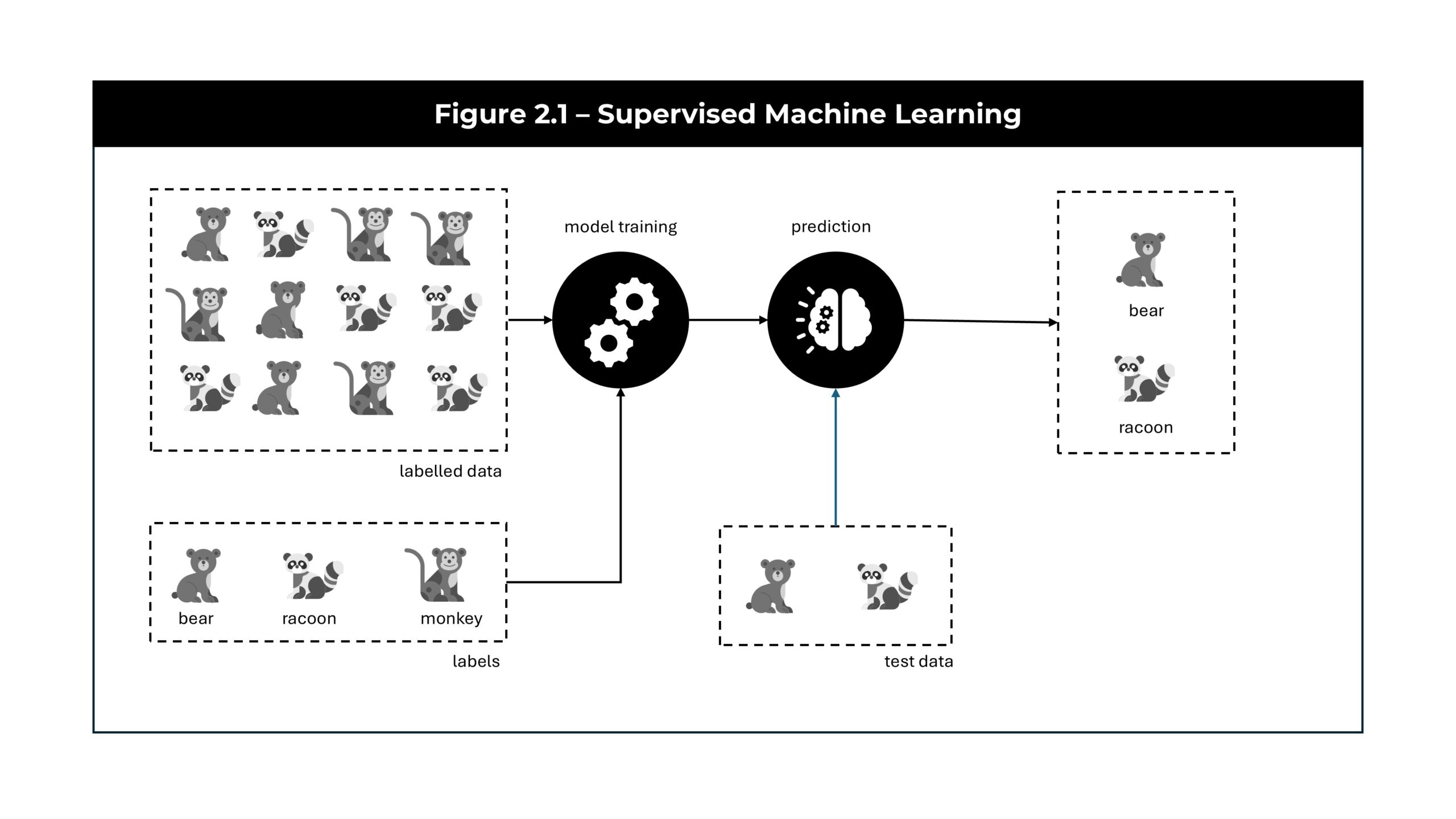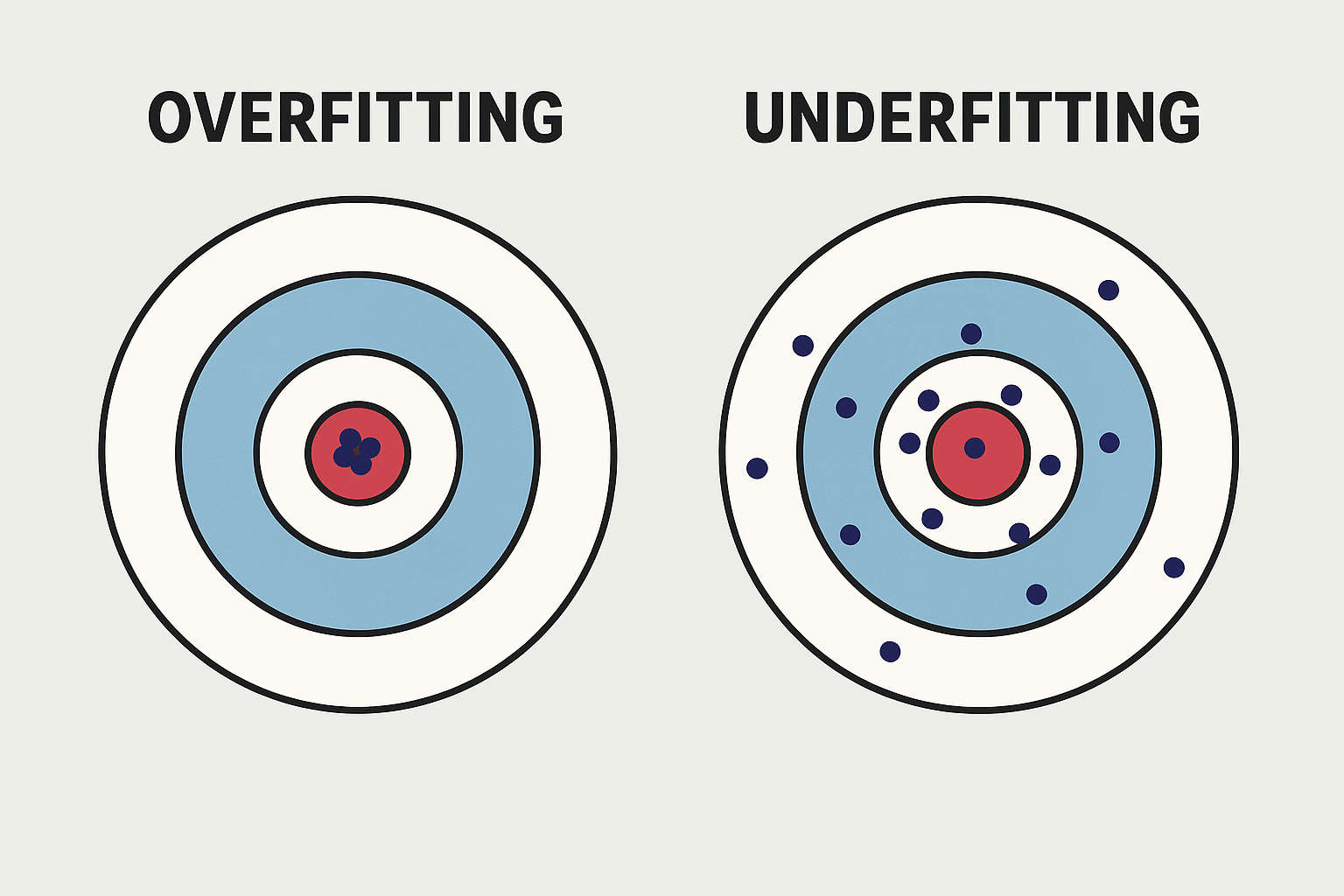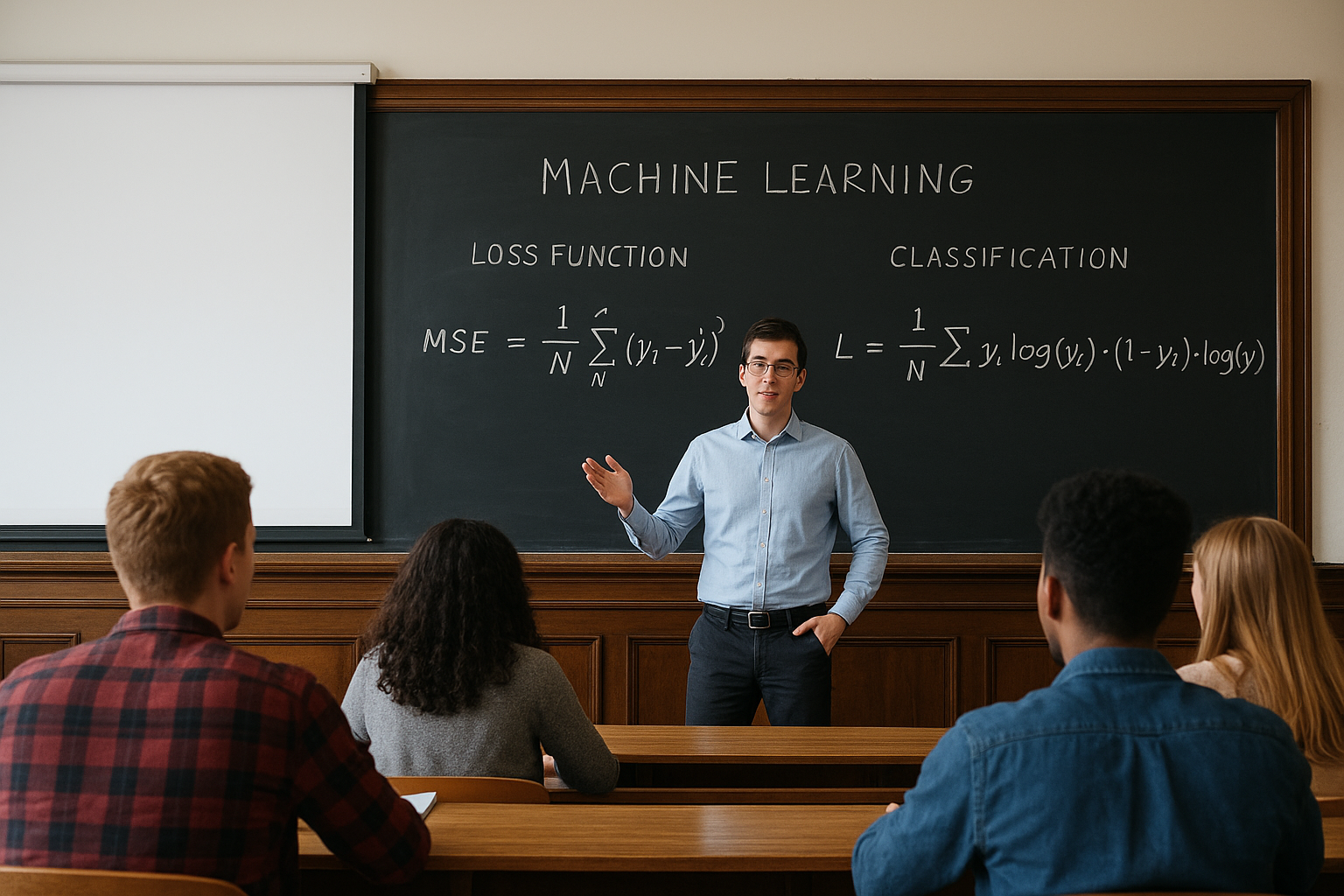How Supervised Machine Learning Works
Supervised machine learning is a method where models learn from labeled data to recognize patterns and make predictions. This article explains the process step by step, from understanding data labels to training, testing, and evaluating a model, using an example of classifying bears, raccoons, and monkeys.

Introduction
Supervised machine learning is a type of artificial intelligence where models learn from labeled data. The goal is for a machine to recognize patterns and make predictions based on past observations. This method is widely used in applications such as spam detection, image recognition, and medical diagnosis.
At its core, supervised learning involves three main steps:
- Training a model using labeled examples.
- Testing the model on new, unseen data.
- Evaluating its performance to improve accuracy.
In this article, we will break down these steps and use an example of classifying animals (bears, raccoons, and monkeys) to illustrate how supervised learning works.
Understanding Data Labels
The defining characteristic of supervised learning is the presence of labeled data. This means that each input in the dataset has a corresponding correct output.
For example, if we are training a model to classify animals, our dataset might look like this:
| Image | Features (Color, Size, Shape) | Value |
|---|---|---|
| 🐻 | Brown, large, round face | Bear |
| 🦝 | Gray, medium, masked face | Racoon |
| 🐒 | Brown, small, tail | Monkey |
Each row in this dataset is an example the model will learn from. The goal is to help the model map inputs (features) to outputs (labels).
Training the Model
The training process involves feeding the labeled dataset into a machine learning algorithm. The algorithm adjusts its internal parameters to find patterns that connect features to labels.
Common Algorithms Used in Supervised Learning:
- Decision Trees – Splits the data into branches based on feature conditions.
- Support Vector Machines (SVM) – Finds the best boundary (hyperplane) to separate different classes.
- Neural Networks – Uses layers of artificial neurons to learn complex patterns.
- k-Nearest Neighbors (k-NN) – Classifies a data point based on the majority label of its nearest neighbors.
For our animal classification example, a decision tree might learn:
- If the animal is large and brown → It’s a bear.
- If the animal is gray with a masked face → It’s a raccoon.
- If the animal is small with a tail → It’s a monkey.
Over many iterations, the model fine-tunes its decision-making process to minimize errors.

Testing the Model
Once the model has been trained, we need to test it with new, unseen data to evaluate its performance. This ensures that the model has not simply memorized the training data but has actually learned meaningful patterns.
Example Test Data:
| Image | Features (Color, Size, Shape) | Model Prediction | Actual Label |
|---|---|---|---|
| 🐻 | Brown, large, round face | Bear | Bear ✅ |
| 🦝 | Gray, medium, masked face | Bear ❌ | Racoon |
| 🐒 | Brown, small, tail | Monkey | Monkey |
Let’s say we deploy our trained model in an app that classifies animals from photos. A user uploads an image, and the model predicts:
- If the photo is of a large brown animal, the app classifies it as a bear.
- If the animal has a masked face and medium size, it is classified as a raccoon.
- If the animal has a small body and a long tail, it is classified as a monkey.
However, what if a small medium racoon is misclassified as a bear, as shown in the table above? This tells us our model needs more training data covering different racoon sizes to improve classification accuracy.
If the model makes incorrect predictions, we can adjust the training process or modify the dataset to improve its accuracy.
Determining Model Accuracy
The model’s accuracy is measured by comparing its predictions with the actual labels. Common metrics include:
- Accuracy = (Correct Predictions / Total Predictions) × 100
- Precision = (True Positives / (True Positives + False Positives))
- Recall = (True Positives / (True Positives + False Negatives))
- F1-score = Harmonic mean of Precision and Recall
For our animal classification task, if the model correctly identifies 90 out of 100 images, its accuracy would be 90%.
If the accuracy is too low, we might:
- Collect more diverse training data.
- Use a different algorithm better suited for our problem.
- Fine-tune hyperparameters to optimize performance.
Conclusion
Supervised machine learning is a powerful technique that enables machines to learn from labeled data and make accurate predictions. The process involves:
- Understanding and preparing labeled data.
- Training a model to find patterns in the data.
- Testing the model to ensure it generalizes well.
- Evaluating and refining the model to improve accuracy.
By following these steps, we can build AI systems capable of recognizing patterns in text, images, and other data, making them valuable for real-world applications.
Knowledge - Certification - Community



